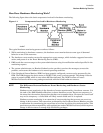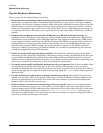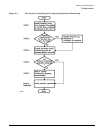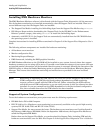
Chapter 1
Introduction
Hardware Monitoring Overview
19
Peripheral Status
Monitor (PSM)
Included with the hardware event monitors, the PSM is a
monitor daemon that acts as a hardware status monitor by
converting events to changes in hardware resource status.
This provides compatibility with MC/ServiceGuard, which
uses changes in status to manage cluster resources. Through
the EMS GUI, the PSM is also used to create hardware
status monitoring requests.
Polling The process of connecting to a hardware resource at regular
intervals to determine its status. Any events that occur
between polling intervals will not be detected until the next
poll, unless the monitor supports asynchronous event
monitoring.
Predictive-enabled See “multiple-view.” This feature enables hardware monitors
to work with Predictive Support.
Resource instance A specific hardware device. The resource instance is the last
element of the resource path and is typically the hardware
path to the resource (e.g., 10_12_5.0.0), but it may also be a
product ID as in the case of AutoRAID disk arrays. There
may be multiple instances for a monitor, each one
representing a unique hardware device for which the
monitor is responsible.
Resource path Hardware event monitors are organized into classes (and
subclasses) for creating monitoring requests. These classes
identify the unique path to each hardware resource
supported by the monitor. Two similar resource paths exist
for each hardware resource—an event path used for creating
event monitoring requests, and a status path used for
creating PSM monitoring requests.
Table 1-1 Hardware Monitoring Terms
Term Definition


















